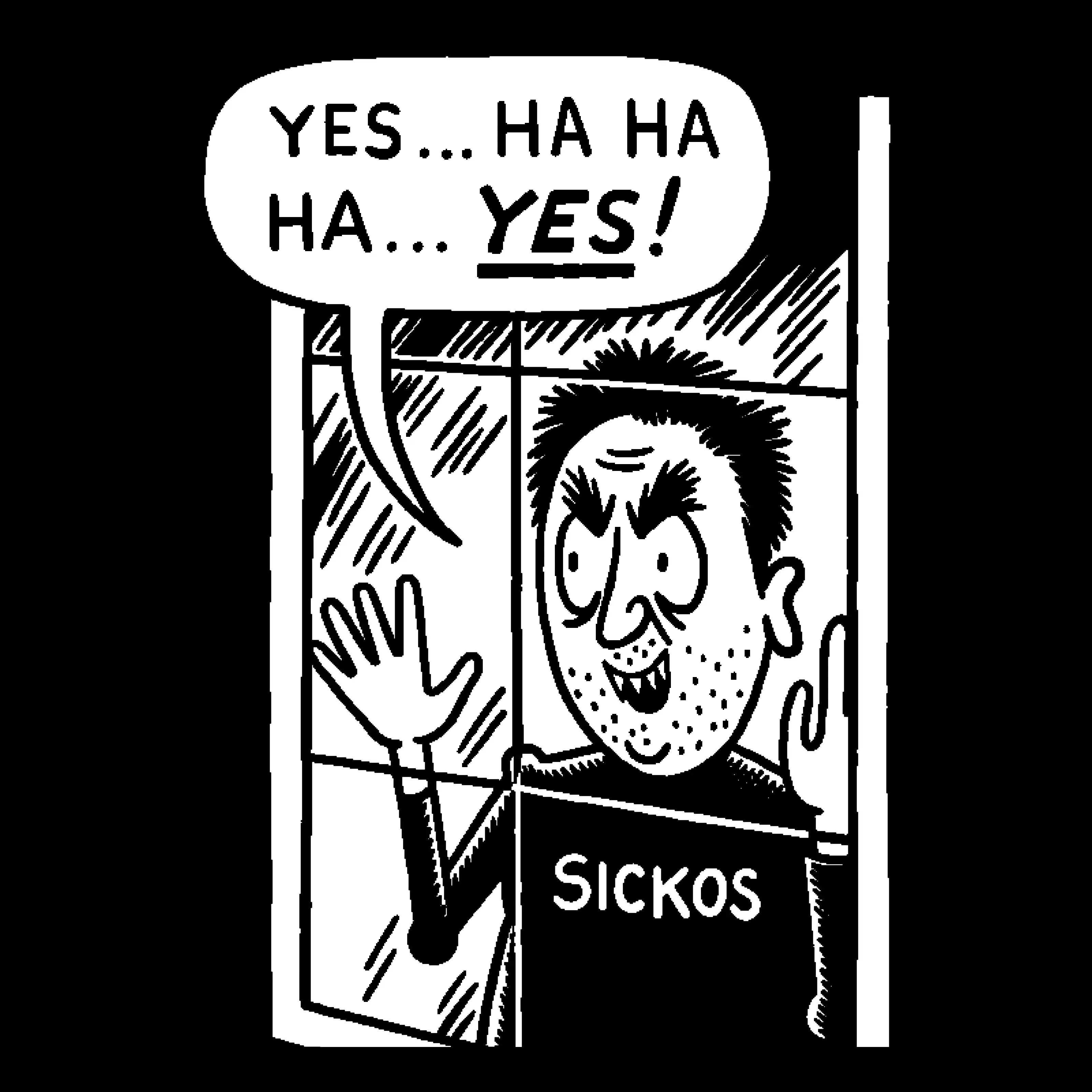My time abroad has taught me that YYYY/MM/DD is the way to format dates.
thank you for spreading the good word
My time using a computer and trying to have any semblance of organization has taught me the same
my man!
its really the only option if you’re using it for things like file storage.
YYYY-MM-DD if you’re doing backup naming, easier to find
Yup, versioned files ALWAYS get a YYYY-MM-DD HHMM timestamp. So when you sort alphabetically, they sort chronologically.
Wrong, not for windows. 1<5<10 there.
That’s why you always have the same number of digits. 01 < 05 < 10
“Apologies, Jason. It’s you & not me.
You’re just the opposite of the man I could ever want to spend the rest of my years with.”
Or you’re Canadian
iso8601 aka 2025-06-12
For consistency, Americans should adopt mm:ss.hh MM-DD-YYYY.
Nah they should adopt metric time and nothing else.
You monster
For consistency, Europeans should adopt ss:mm:hh DD-MM-YYYY.
See how ridiculous that is? ISO8601 or GTFO
The european one is sorted based on importance to see. The day is more important than the month which is more important than the year. The hour is more important than the minute which is more important than the second
But in any given situation where the month is important enough that I need to know it, I want to know the month regardless of the day. The 25th means fuck all to me unless I know the month, as well; whereas there are plenty of scenarios where I want to know the month but the day isn’t quite as important.
Usually if someone just says the 25th that means of the current month. The month only needs to be referred to if it’s not the same as the current. (In conversation)
In that case, nothing is stopping you from saying the month only.
The same thing happens to the year and day too
January means nothing if you dont know the year
At least ss:mm:hh and DD-MM-YYYY are internally consistent, even if they aren’t consistent with each other.
MM-DD-YYYY isn’t even internally consistent.
Excuse me but !iso8601@lemmy.sdf.org .
Waiting for the ISO 8601 & 9001 gang to show up and promote YYYY-MM-DD.
Edit: That took seconds, a very punctual bunch.

Hello I’ve arrived
Whoo! ISO-8601 fan club!
Btw this is how it’s used in some countries (eg., Hungary, Japan, China, and a few others from Asia). All other date formats are very strange and confusing for us
YYYYMMDD, scrub out the excess fat!
If only there were some international standards organization to make a decision for us!
I use periods. YYYY.MM.DD
I know. I started using the format with periods back in the 90s, before I knew of the standard, and at this point doing it with periods is muscle memory. That’s not meant as an excuse, just an explanation. The excuse is laziness.
Same here but not in the 90s. Since discovering the standard I have switched though.
Best excuse
That’s … why I’m here
RFC 3339 if you please. Let’s be prescriptive.
After all the self-important blowhards in the committe were satisified that they had put their fingerprint on the ISO8601 document with bullshit like “year-month-week” format support and signed off, they went home.
The rest stayed behind, waited a few minutes to be safe, and then quickly made RFC3339 like a proper standard.
This is what RFC3339 vs ISO8601 feels like.
ISO8601 is YYYY-MM-DD nothing to do with weeks and isn;t the only difference of RFC3339 that you can use a space instead of a T in between the date and time? Also RFC3339 is only an internet standard while ISO is a generally international standard?
ISO8601 is much much looser than RFC3339:
Yeah I know, but it also has a different use case. As far as I know RFC3339 is mostly used for programming while ISO8601 is the standard for international communication and I wish people would use it more. I have processed American invoices in the wrong month because of their date structure. I have no reason to it, but I always write my date ISO 8601 (YYYY-MM-DD)
No idea what you based those claims on, but the spec itself (I have the pdf) and Wikipedia’s summary disagree. ISO8601 allows for YYY-MM-DD yes but it allows for a bunch of silly stuff.
https://en.m.wikipedia.org/wiki/ISO_8601
Both “2025-W24-4” and “2025‐163” are valid representations of today’s date in ISO8601.
(Also the optional timezone makes it utterly useless.)
The omitting of timezones doesn’t matter to a vast majority of the world, since most countries only have one time zone so I don’t see a reason why that is relevant in most use cases.
ISO is a general standard, it’s in the name and the RFC is created for the internet, that is also in the name/description of the RF.
Using 2025-164 can be handy, I actually use the day of the year to check what invoices from previous year are open since those are the invoices that are due 164 days or more.
Let’s not forget that technically you have to pay for ISO8601, despite it being nearly useless as a standard because it allows several incompatible formats to coexist.
Fucking wild.
While a fucking stupid concept, it’s nice that this particular format has a monetary deterrent.
Only if you want to say you have the certification for it, you can use it if you want, that is fine
Anyone help enlighten me about whatever this and unix epoch are getting at? Are these really more specific/better than iso 8601 and why specifically?
Happily!
So, first epoch time. It’s a pretty robust standard, covers many use cases, has few edge cases… but it’s specifically for machine usage, since it’s not human readable and it’s not reversible into the past (pre-1970).
ISO 8601 (depending on the annum), by the text of the documentation, these are all valid dates:
- 2007-04-05T14:30
- 2007-04-05T12:30−02:00
- 2007-04-05T14:30Z
- 200704051430
- 07-04-05T14:30
- 2007-95T14:30
Etc.
RFC 3339 (& RFC 9557, it’s newest modification) is actually a subset of ISO 8601 and is far more prescriptive. For example you must have a timezone designator. You must have a separator between the date and time. You must use a dash between date elements and a colon between time elements. You can easily add standardized subseconds.
- 2007-04-05T12:30−02:00
- 2007-04-05 14:30Z
This means that RFC 3339 is much easier to parse and use by both machines and humans.
This page (reddit, I know…) has a great summary, and so in the interest of knowledge and attribution I’ll link it: https://www.reddit.com/r/ISO8601/comments/p572xy/rfc_3339_versus_iso_8601/
This website allows you to more directly compare the two interactively. https://ijmacd.github.io/rfc3339-iso8601/
This is delicious, and I can’t say thank you enough. I like this a lot. If anyone has any insight on more superior standards or subsets of these, please inform me. This made my day tho 😊
ISO is a wider standard than the RFC standards though which is only for the internet
I’m now imagining a child who must write
2026-05-10T10:06:09.426792Zon all of their tests.They should also add a timezone since most of us don’t live at UTC zero timezones -> 2012-12-28T18:12:33+09:00
They did; the
Zat the end denotes UTC.My point was not everyone is just at UTC zero but sure Z is also a timezone.
Most people communicate mostly with people in the same timezone’s, partially because most countries only have one timezone.
Microsecond precision is fine for most use cases, but I teach my kids to use nanoseconds.
It’s a flexible standard.
2026-05-10T10:06:09.426792Z,2026-05-10 10:06:09.426792Z,2026-05-10 10:06:09.426792, and2026-05-10all conform to the standard.
ISO thirsty!
deleted by creator
ISO 8601/RFC-3339 (Unix Epoch also acceptable) gang reporting in.
I’m doing my part!
It’s the only way that makes sense
Hello from Hungary ! We should also democratize the Surname GivenName format
Szia. We should indeed.
o7
Anyone that gives me a document or receipt or invoice with a date formatted DD-MM-YYYY should have a tire iron swung at their thighs
Multiple swings if they can’t decide on using DD-MM-YYYY or MM-DD-YYYY or DD-MM-YY or MM-DD-YY or YY-MM-DD or YY-DD-MM
I rather have somebody write their invoices at DD-MM-YYYY cause there is a bigger chance it will most likely not be an invoice from a North American company which notriously cannot make proper invoices and most software that actually scans and processes invoices is based on the European standaard DD-MM-YYYY or on ISO8601.
YYYY-MM-… well, ya know the deal…
As a big ISO 8601 guy myself, I request explanation of this 9001 addition? Never heard of it till now and am optimistic
Seconded. Not coming up with much when trying to find out more about it.
Quality Management Systems, unsure what it has to do with 8601, but guess the fanboy venn diagram overlaps
sup
DD-MM-YYYY-HH-MM-SS
Makes no sense!
I prefer the alphabetical date format
DD-HH-MM-SS-mm-yyfor maximum confusionWere you mostly joking or is there a utility to this? Genuinely curious as someone that finds confusing things slightly more memorable in a really backwards way
Yes I was joking, get a random timestamp in this format and you have no idea what it’s referring to.
DD:HH:MM:SS:mm:yyis even better because it could be a MAC address.
This is stupid AF.
YYYY/MM/DD
This is the best choice.
/isn’t a valid char in filenames, yyyy-mm-dd is betterIts the better choice for digital data I guess. In every day use, the day is the most important thing, then month, then year.
From context, I usually know the year. Probably even the month. So I’ll use DD.MM.YYYY. If someone asks me when we’re going to meet I won’t say “twenty-twentyfive”, June, twentieth. And I’m guessing you don’t do that either.
ISO 8601 gang.
Represent.
Immediate red flag, we all know that YYYY/MM/DD is the only acceptable perfect date
Actually YYYY-MM-DD is better since it can be used basically everywhere and with / it can’t be used in filenames
Agreed. As a nonviolent person, I’m willing to go to war over this. Can’t have two files from different years listed side by side because they were from the first day of different months. That’s anarchy.
Preeeety sure it’s stardate.
I thought that was unix time /s
No, it’s a unix directory structure
This fucknuts who thinks day should come before year, hah! Give me YYYY-MM-DD, because dashes are better than slashes any day of the week.
This format is the best. Especially for digital file names, because sorting the files by filename also sorts them by date.
A true professional. Have an upvote.
I prefer YYYY.MM.DD, because the dots look aesthetically pleasing when the date is being displayed within the vincity of a clock displaying the time digitally.
When i first read a date, i want to see the thing that changes 74 times in my entire life first too
HA! if you even get to be 74!
But in some jobs the year is more important (bookkeeping/accounting) and doing YYYY-MM-DD automatically sorts your dates
YYYY-MM-DD obviously has uses, especially with sorting, but that doesnt make it the objectively best date format
No I agree, hopefully we can all agree that the MMDDYYYY is the worst date format
Yep. Months must always be in the middle
YYYYMMDDHHMMSS is the only acceptable format.
ISO 8601 is clearly much superior due to being delimited.
ISO is paywalled therefore inferior than the free RFC.
Nope, it clearly should be mmsshhMMDDYYYY
Heretic!
YYYY.MM.DD is the correct format.
small correction: YYYY-MM-DD to avoid common special meanings chars
rfc3339 my beloved
If you use DD/MM/YYYY then logically you should also use ss:mm:hh
SMH…
Sarcastically Shaking My Many Hydra Heads.
This is probably the best comment I have seen all year.
Or just use ISO8601 whi uses hh:mm:ss and well it is an ISO standard, but at least DD:MM:YYYY makes more sense than what Americans are doing.
Also 4th of july …
No, because in most cases the most important information about a date is the day, then month, then year. It also matches the way we read dates. For the time it’s typically the hour, then minutes, then seconds. YYYY/MM/DD is better when naming files, but in UIs I much prefer DD/MM/YYYY, it’s just more natural to the way we read.
deleted by creator
Why is there no format that gives the month in three letter abbreviation so its clear cut what it means?
That’s what the us armed forces do. Jun-12-2025
























